Humans did not develop storytelling once they had language. Instead, storytelling drove the evolution of language. There may not have been box office hits or graphic novels 30,000 years ago, but there were minerals and blank cave walls, and people added visuals to their stories for the first time.
Visual storytelling is an essential aspect of the human experience and one we practice every day. We use it to connect and communicate with the world in so many unique ways, from exaggerated gestures in conversations with friends to crafting the perfect order of photos for an Instagram dump. Understanding how visual storytelling works and why humans still strive to innovate on one of the world's oldest art forms helps us better compel, convince, persuade, and explain, well, everything.
From artificial intelligence and augmented reality (AR) to digital mapmaking, gaming, and more, here's how Georgia Tech students and faculty use technology to explore, create, and innovate the art of visual storytelling at Ivan Allen College.
"The power of storytelling lies in its ability to connect with people on a human level, invoking empathy, sparking curiosity, and fostering a shared sense of purpose or understanding. It is the foremost technique for embedding ideas into the global consciousness."
— Milka Trajkova, research scientist
Preserving Our Collective Memory
Visual storytelling helps preserve our collective memory. Students and faculty at Ivan Allen College use digital maps, archives, and AR to examine and reinterpret our history in new and engaging ways.
By emphasizing the individuals and groups overlooked in traditional narratives, such as the civil rights protesters in The PickRick Project or the victims of atomic bombings in Nagasaki Kitty: Enhanced Edition, Janet Murray and Ryan Scheiding use visual storytelling to bring forth untold stories and humanize historical events.
For example, in the AR app Murray and her students designed, Georgia Tech visitors are immersed in the past as they watch real-life civil rights protests unfold on what is now a campus lawn.
"We want to bring awareness to the four ministers — George Willis, Jr., Albert L. Dunn, Woodrow T. Lewis, and Charles Wells — who used non-violent confrontation to enforce the Civil Rights Act of 1964," Murray says. "The story was previously told as an incident in the life of Lester Maddox, a segregationist and future governor of Georgia, and the ministers have often gone unnamed."
Along with humanizing historical events, these projects also make them more accessible. Jason Woodworth-Hou’s "Before the Hedges" AR experience allows people to step back in time to the first football game at the University of Georgia, whether they are standing on the field or anywhere in the world.
Using AR to restage historical events has many benefits, Woodworth-Hou explains: it's less labor intensive and more economically feasible than recreating them in the physical world, and it protects the spaces from disruption from too much human traffic. However, he finds AR most valuable as a research tool, allowing scholars to rebuild different accounts of the same historical event and test their viability in the exact locations they once occurred.
"With the increasing move to artificial intelligence, students need to know they can tell their stories and control the digital tools, rather than the other way around. This basic principle is hugely important in how we design and use digital tools — and how we think about storytelling in the age of AI."
— Carla Gerona, associate professor
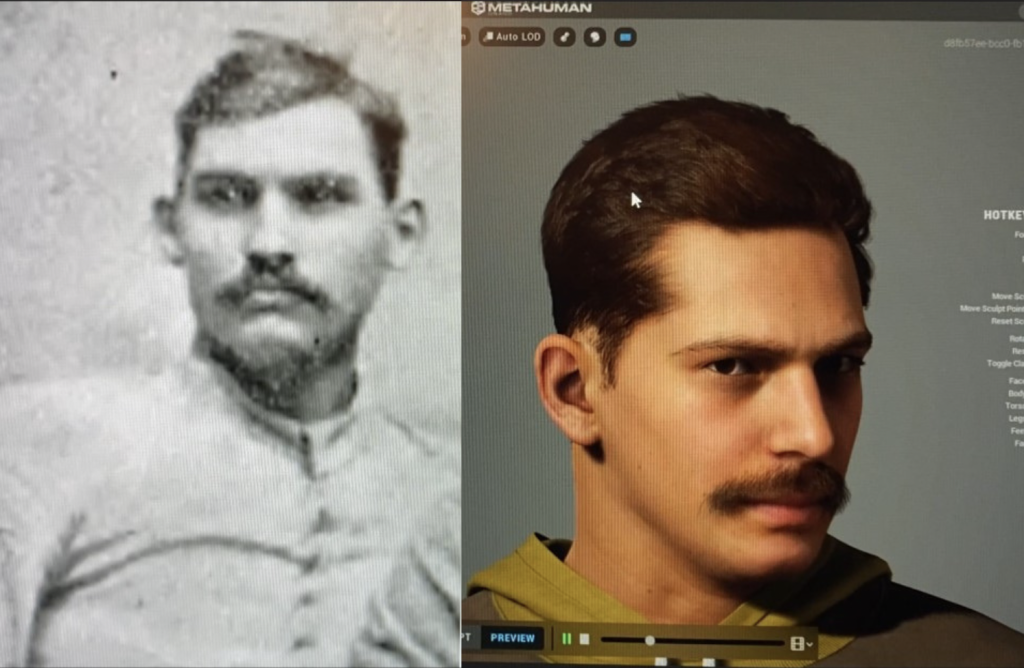
Before the Hedges: A Historical Reenactment in Hyperplace
Jason Woodworth-Hou uses augmented reality to recreate historical events, transporting users back to the first football game at the University of Georgia in 1892.
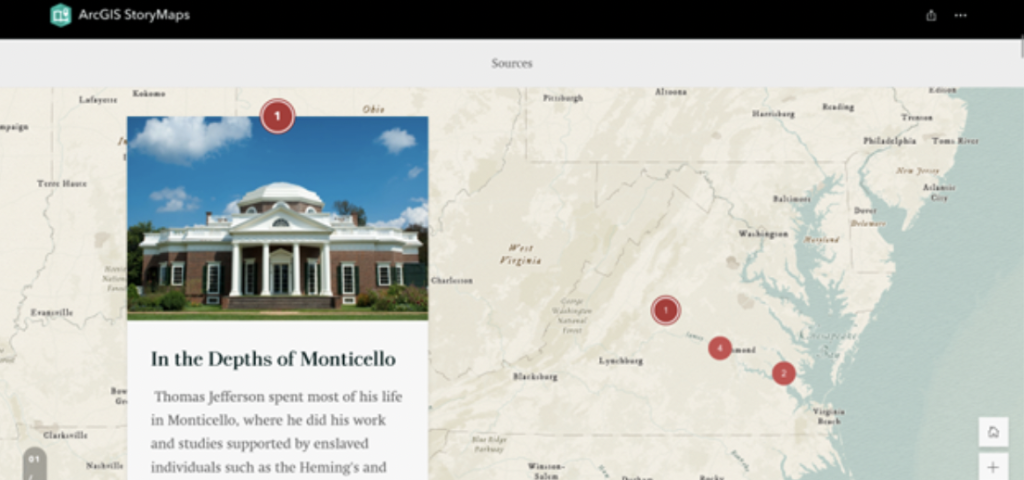
Southern Trails
Carla Gerona teaches history with StoryMaps, a software program allowing students to move through space and engage with history on a deeper level by building stories that emphasize place.
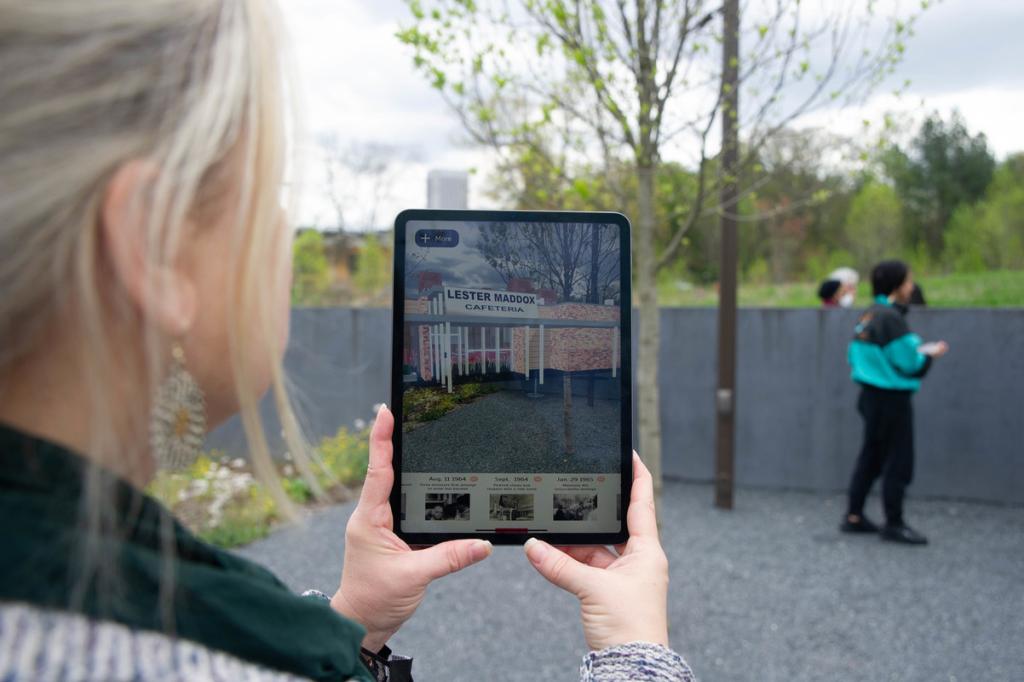
Pickrick Project
The Pickrick Project, led by Janet Murray, uses augmented reality to recontextualize a civil rights protest on Georgia Tech's campus, shifting the focus from the segregationists to the protesters.
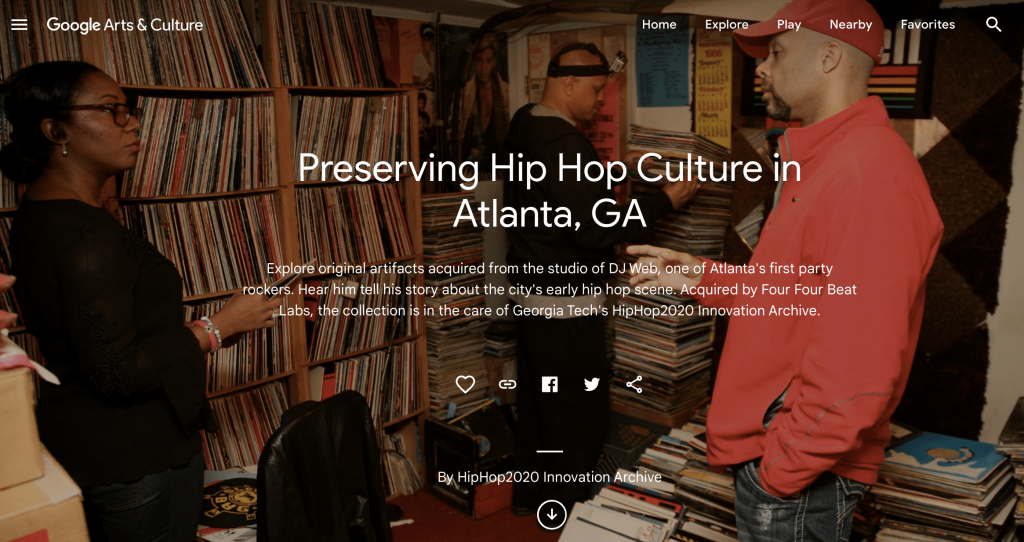
HipHop2020 Innovation Archive
Students in Joycelyn Wilson's vertically integrated project use artifacts from the HipHop2020 Innovation Archive to curate stories in the Google Arts and Culture dashboard that preserve, celebrate, and innovate the hip-hop aesthetic.
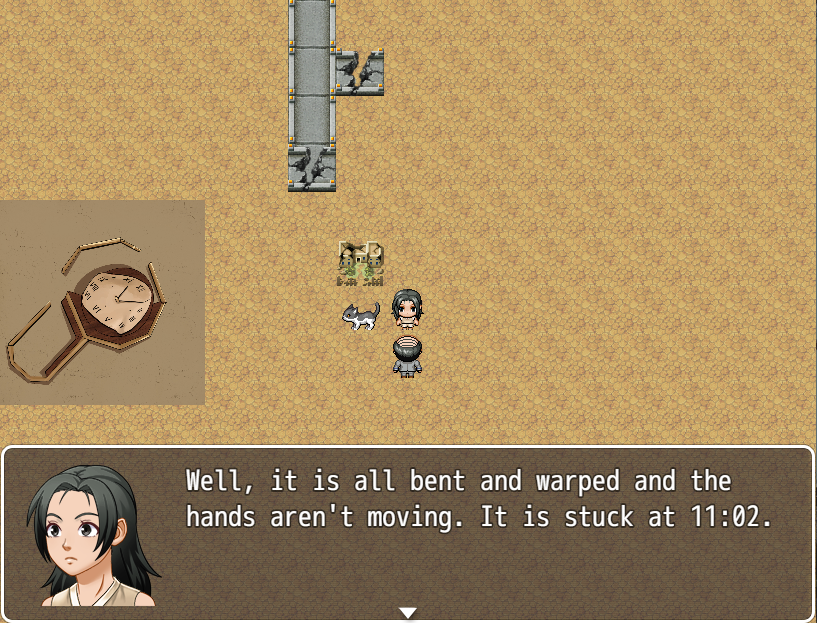
Nagasaki Kitty: Enhanced Edition
Ryan Scheiding's video game is a digital monument to the victims of the atomic bombings of Hiroshima and Nagasaki, designed for historical education and Japanese language learning.
"Knowledge and opinions are valueless if you cannot effectively communicate them to others. One of the most easily understood and accessible ways of making a point is through a well-crafted story or narrative. Storytelling skills allow for the dissemination of key ideas that can positively impact your community and the world."
— Ryan Scheiding, assistant professor
Contemplating Complex Problems
Storytelling is a conduit for empathy. Visual narratives help students approach complex issues with an open mind.
Lainie Pomerleau, a Marion L. Brittain Postdoctoral Fellow at LMC, uses gaming as a canvas to address contemporary societal challenges in her ENGL 1102 class. Throughout the semester, her students use generative AI to create visually immersive worlds, intertwining fantasy elements with real-world issues such as labor inequity and social justice.
"Using these structures allows students to more easily write themselves into complicated issues and articulate the things that those playing the game can do to bring about actionable change," Pomerleau says.
Brigitte Stepanov, an assistant professor of French and Francophone Studies in the School of Modern Languages, also used visual storytelling in her Serve-Learn-Sustain program at Georgia Tech's study abroad campus in Metz, France.
In her Ecology of Objects project, students created six images of a single object to showcase its environmental imprint. The resulting collections included photos, drawings, digital media, animations, collages, and paper mâché. Each piece was then displayed on campus for other GT-Europe students to view.
Pomerleau and Stepanov's courses help equip students with the creative skills they need to get ideas out of their heads and into the world, fostering a new generation of problem solvers adept at communicating with diverse audiences. The bottom line? Storytelling skills help Georgia Tech students impact their communities more robustly, Pomerleau says.

Reimagined Pasts and Fantastical Futures
Students in Lainie Pomerleau's Neomedievalism class create immersive gaming worlds to address contemporary issues, using AI-generated visuals for storytelling.
"Storytelling is all about translation — the translation of ideas into media, including text and image."
— Brigitte Stepanov, assistant professor of French and Francophone Studies

An Ecology of Objects
Students in Brigitte Stepanov's class in Metz, France, engaged with the public through mixed-media art installations that fostered a visual discourse on sustainability.
"Genres like fantasy and modes like immersive games are appreciated for their entertainment value – which is great – but often overlooked as vehicles of change."
— Lainie Pomerleau, Marion L. Brittain Postdoctoral Fellow
Collaboration and Creativity
The world runs on collaboration. Interdisciplinary storytelling integrates art and technology to enhance human creativity rather than replace it.
Milka Trajkova was a professional dancer — and now a research scientist at LMC. She works with Professor Brian Magerko and a team of collaborators on an artificial intelligence dance project called LuminAI.
"It's essentially a ChatGPT for movement, with a human-centered design approach," Trajkova explains. "The emergence of AI and data-driven learning is not just a technological milestone; it's a pivotal moment for creative expression. The excitement and importance lie in the potential of AI to augment and enhance human skills rather than replace them."
LMC faculty members John Thornton and Ida Yoshinaga share this sentiment in their new CinèInnovation Studios VIP. Participating students work across three teams to gain artistic and technical proficiency in virtual filmmaking, helping them become valuable assets in an industry "where technological innovation drives creative possibilities," Thornton says.
Innovation in AI and immersive storytelling technology has also helped level the playing field, he adds, opening doors for storytellers of all backgrounds and skill levels to participate in the creative process.
From cave paintings to TikTok, storytelling is, and has always been, for everyone. Ivan Allen College initiatives help students, faculty, and staff across the Institute use technology to tap into this instinct and share their hopes, dreams, ideas, and experiences with the world in innovative and impactful ways. From courses to VIPs to research labs, get inspired and get involved with visual storytelling at Ivan Allen College!
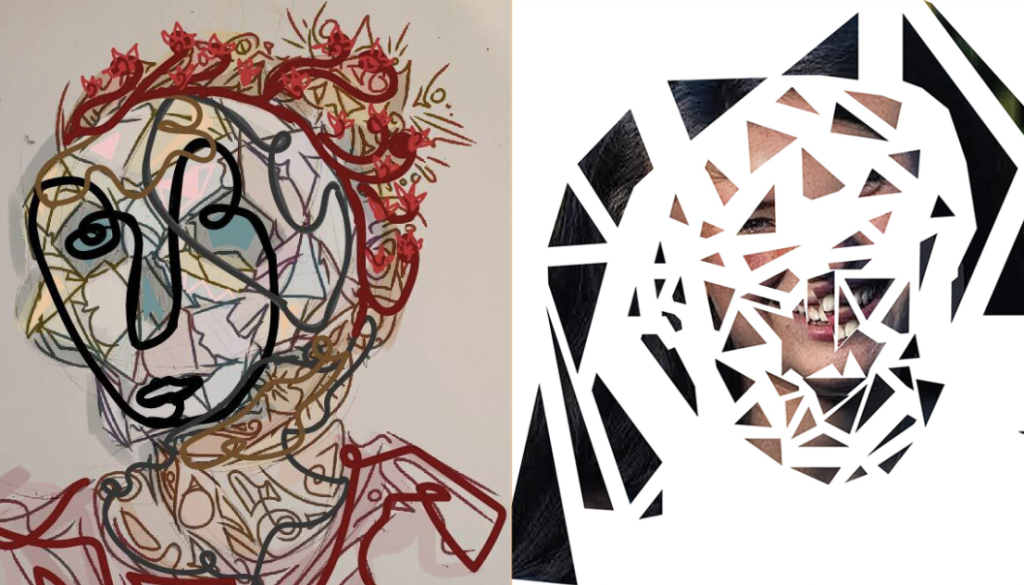
Art and AI: VIP
Mark Leibert's vertically integrated project sets students loose at the intersection of art and technology, encouraging artists and musicians to apply new techniques to their work.
"These immersive tools and technologies redefine storytelling, making it more accessible, dynamic, and impactful in our interconnected world."
— John Thornton, senior academic professional

Puffs
Melissa Foulger, the artistic director at DramaTech, infuses projection technology with hand-drawn images to enhance storytelling and draw the audience in with a deeper sense of atmosphere.

LuminAI
Milka Trajkova is helping design an AI agent for dance improvisation, focusing on advancing dance technology while preserving the authenticity of human expression.
"We need to strike a balance between embracing innovative technologies and safeguarding the core values of human artistic endeavors. In fields like dance, AI offers a pathway to evolve the art form, enriching it with new possibilities while preserving its authentic emotional resonance and human connection."
— Milka Trajkova, research scientist
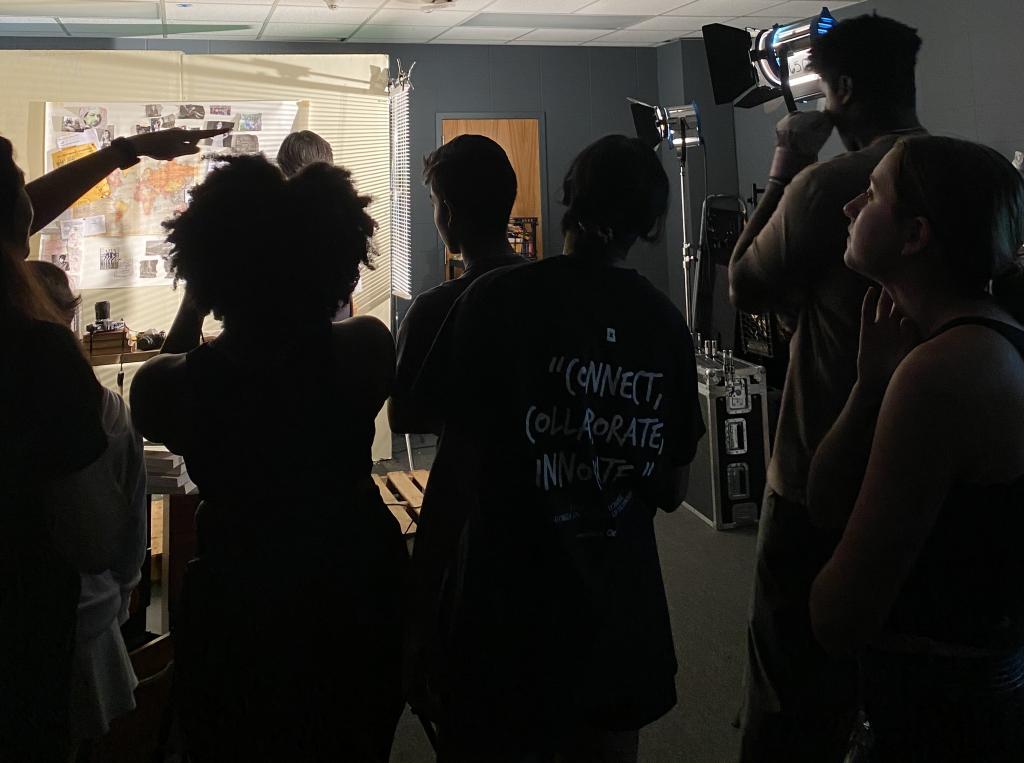
CinèInnovation Studios
Led by John Thornton and Ida Yoshinaga, this vertically integrated project works at the convergence of technology and creativity, merging cinematic filmmaking with new tools — such as 3D filmmaking — to prepare students for the future of virtual production.
"Storytelling helps us retain more information when confronted with a mass of data and news. Stories connect the dots between the past and an ever-changing world."
— Mark Leibert, professor of the practice
